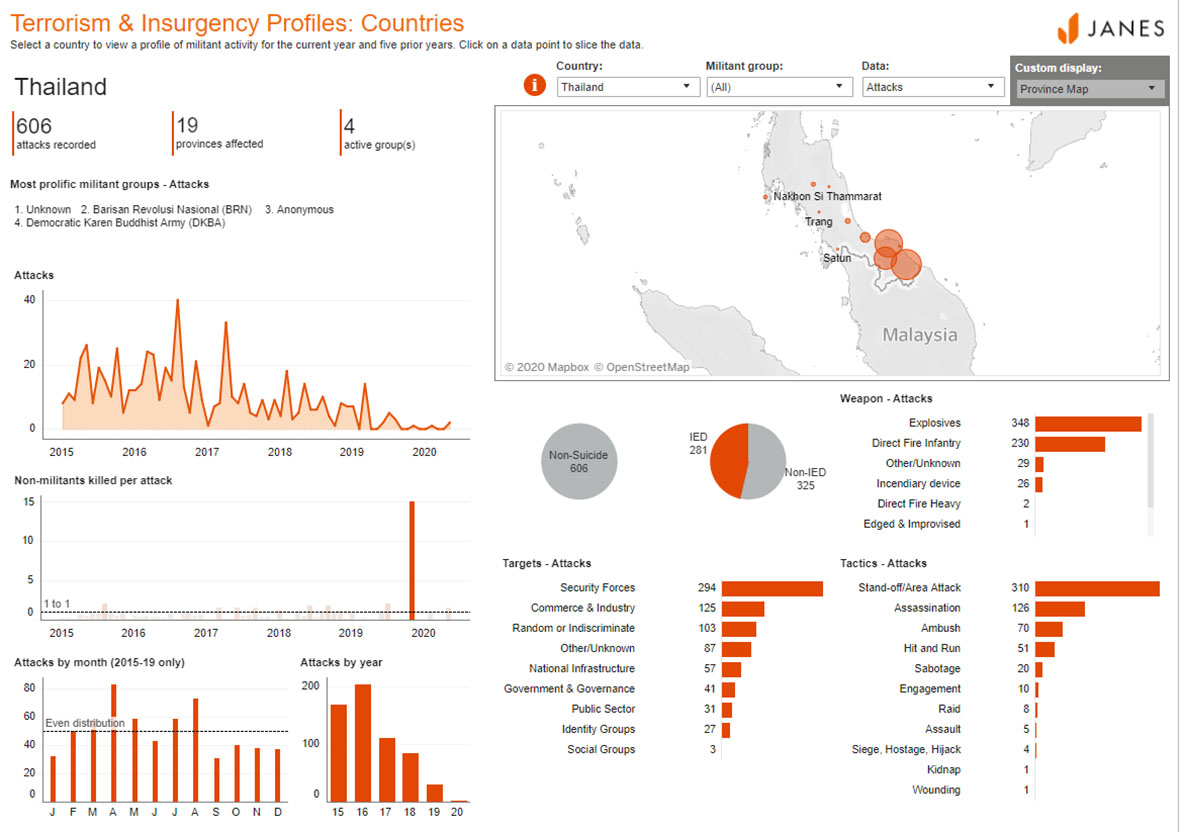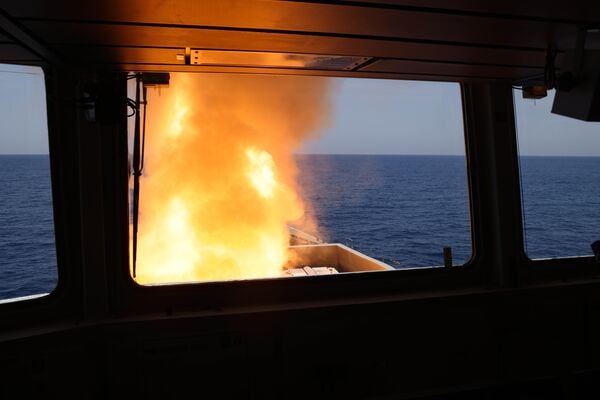- About
- Intara
- Capabilities
- Advisory
- Resources
- News
- Store
Covid-19: Formalisation of successful pandemic-informed ceasefire or return to hostilities in southern Thailand?
11 June 2020
by Anthony Davis
After 16 years of relentless violence, the onset of the Covid-19 pandemic has had an unprecedented impact on southern Thailand’s Malay-Muslim separatist insurgency, opening the way for a unilateral militant ceasefire and two months of almost unbroken peace.
As the threat of the virus recedes and the Muslim community emerges from the fasting month of Ramadan – a period which in the past has often resulted in a spike in violence – the Thai state and the insurgent Barisan Revolusi Nasional (BRN), or National Revolutionary Front, are now assessing whether to attempt to build on the lull with more confidence-building measures and possibly a formal ceasefire or to revert to a new round of hostilities.
Pandemic response

New labour deal touted as possible pathway for national workforce model for naval ships
01 May 2024
by Michael Fabey


The US Navy has begun to improve its current public shipyards, such as the Portsmouth Naval Shipyard, shown here. (US Navy)
A new labour agreement signed on 29 April that seeks to build a rotational workforce of skilled welders could eventually serve as template for a national workforce arrangement for work on naval ships, according to Edward L Bartlett Jr, founder and CEO of Bartlett Maritime Corporation (BMC) – the company that brokered the deal.
The impetus for the rotational welders was a plan to use such a workforce to work on naval ships in Charleston, South Carolina, Bartlett told Janes in an interview on 29 April.
BMC hopes to prove out the concept through the recentlysigned labour deal and similar follow-on agreements. BMC has also proposed to construct and operate component repair facilities in northeast Ohio with an option to build a new public naval shipyard in Charleston.
Royal Navy landing ship RFA Cardigan Bay to support international effort to build Gaza pier
01 May 2024
by Kate Tringham


RFA Cardigan Bay will support the US military personnel by providing temporary offshore accommodation as they build a new temporary pier to deliver aid directly into Gaza. (UK MoD/Crown Copyright)
The UK Royal Navy's (RN's) Bay-class landing ship dock auxiliary (LSD(A)) vessel Royal Fleet Auxiliary (RFA) Cardigan Bay (L 3009) has been deployed to the coast of Gaza where it will provide support to US military building a new temporary floating pier that will facilitate the delivery of humanitarian aid into the country directly by sea, the UK Ministry of Defence (MoD) has confirmed.
Cardigan Bay , which is en route to Gaza from Cyprus, will provide temporary offshore accommodation for personnel working on the offshore pier project, the MoD said.
The initiative will enable cargo ships to deliver pre-screened aid from Cyprus directly to the pier, where it will be loaded onto trucks to transfer across Gaza. It forms part of wider international efforts to expand the delivery of aid into Gaza and will complement efforts to get more aid in via land routes and the Port of Ashdod.
US military vessels, including USNS Benavidez,
HMS Diamond shoots down Houthi missile in Red Sea
26 April 2024
by Kate Tringham


HMS Diamond shoots down a missile fired by Iranian-backed Houthis from Yemen over the Gulf of Aden using its Sea Viper missile system – the first time a Royal Navy warship has intercepted a missile in combat since 1991. (Royal Navy/Crown Copyright)
The UK Royal Navy's (RN's) Daring (Type 45)-class destroyer HMS Diamond (D 34) has successfully engaged an anti-ship ballistic missile (ASBM) launched by Yemen-based Ansar Allah (commonly known as Houthi) rebels targeting a merchant ship in the Gulf of Aden, the service confirmed on 25 April.
During the incident, which took place around 1151 h local time (Sanaa time) on 24 April, Diamond used its Sea Viper anti-air guided weapon system to shoot down the missile, the navy said. According to a US Central Command (CENTCOM) statement issued on 25 April, the missile was likely targeting the US-flagged, owned, and operated merchant vessel MV Yorktown, which has 18 US and four Greek crew members onboard.
No injuries or damage was sustained by the ship or its crew, CENTCOM said.
Diamond
After 16 years of relentless violence, the onset of the Covid-19 pandemic has had an unprecedented i...
Latest Podcasts
The value of OSINT for intelligence sharing
In this episode Harry Kemsley and Sean Corbett are joined by Phil Ritcheson Ph.D. to discuss why intelligence sharing is now more important than ever. They discuss the growing need for allied and partnership and how by using open sources facilit...
Listen nowJanes Case Studies
Using Janes Intara to build a common intelligence picture: Russian build up on the Ukrainian border
View Case StudyNews Categories
 Security Details
Security Details